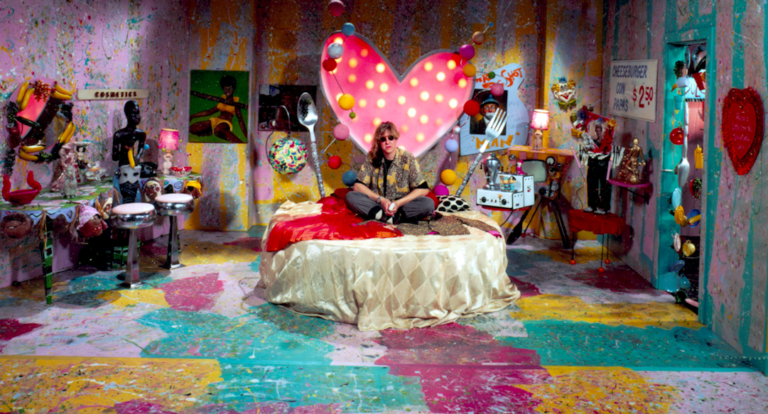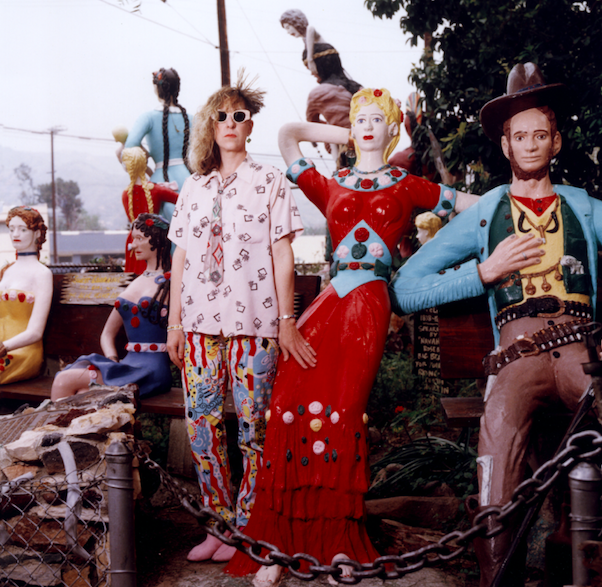
We often associate songs with its performers and tend to forget the songwriters who created them, before bequeathing their brainchild to a voice that isn’t theirs. But the world of the arts is capable of setting the record straight, and that is the case with the film The World According To Allee Willis directed by Alexis Manya Spraic.
This exciting documentary retraces the lifetime and imaginative realm of the creative think-tank who was behind hit songs such as September, Boogie Wonderland, Neutron Dance; as well as the theme song from F.R.I.E.N.D.S. I’ll Be There For You and the Tony and Grammy-winning Broadway musical, The Color Purple, which was also made into a major motion picture produced by Steven Spielberg, Oprah Winfrey, and Quincy Jones in 2023.
Alexis Manya Spraic goes beyond the signature asymmetrical haircut of this multi-disciplinary Allee Willis, starting from her childhood in Detroit, all the way to the Carrollesque home in the San Fernando Valley. Willis started writing during the Seventies then moved to Los Angeles. She recalled how back in the day the crowd she spent time with had guts. She was starving with friends who were all aspiring artists, but they were so driven it never became bleak, not even when all that was left in her bank account were 74 cents.

Maurice White — founder, leader, main songwriter and chief producer of the band Earth, Wind & Fire — immediately recognised her vibe as a communicator and took her under his wing. Growing up in the shadow of Motown, influenced Allee Willis’ work, especially listening to the few female songwriters present in those days such as Mary Wells and Martha Jean.
At one point Allee Willis was considered the most dangerous woman in America by the Pravda, the official newspaper of the prelapsarian Soviet Union, but this label did not intimidate her. She was fearless and marched to the beat of her own drum (pun intended). She proudly was an outrageous tomboy, who did not fit the mould of other girls her age. Allee Willis had her style and was ahead of her times, anticipating today’s trend of upcycling for interior design and sustainable shopping in second hand shops. In fact, she was an avid frequenter of thrift stores and all the discarded materials she accumulated became decorative pieces in her house that became a celebration of kitsch.
Being in the spotlight frightened her, but fame was still a pursuit she chased, to find validation and love from a wide audience. This was to fill the void she had growing up, since her mother passed away when she was an adolescent and her father never accepted her for being different than the masses. Some may wonder why Allee preferred to remain in the shadows of her songs. The reason is that after performing her first and only album, Childstar, audiences and critics offended her androgynous appearance and gender-bending style. This traumatic experience marked the end of her career as a recording artist, despite she continued writing and composing for others with success. Her works also include music scores, such as the song Fallen for the film Pretty Woman, You’re the Best from the movie Karate Kid and Stir It Up from the picture Beverly Hills Cop.
The pace of The World According To Allee Willis is almost cartoonish, as the artist’s bubblegum world coalesces with her quest to experiment in all fields. It chronicles her professional achievements — such as the 60 million records she sold — and her pioneering ventures with the internet. Allee Willis had foreseen all the phenomena we are experiencing today, with the world wide’s web potential of building a global community. She even preceded reality tv, by filming her life with videocamera tapes.

The World According To Allee Willis further serves as an important parable to remind audiences that public figures have an intensely private life. That was the case with the American artist, whose 20-year romance with animator and producer Prudence Fenton was very hush-hush. While being extremely reserved about her homosexuality, Willis did not shy away from being the host of events that would draw whimsical and eccentric people together, including her longtime friend Paul Reubens Pee-wee Herman. As someone very well says, she was a facilitator of happiness for others, despite she was melancholic towards her own affairs.
Alexis Manya Spraic’s documentary returns the rightful recognition to a visionary artist and celebrates the mark she has left in the world.
Final Grade: B+
Photos Courtesy of Magnolia Pictures

